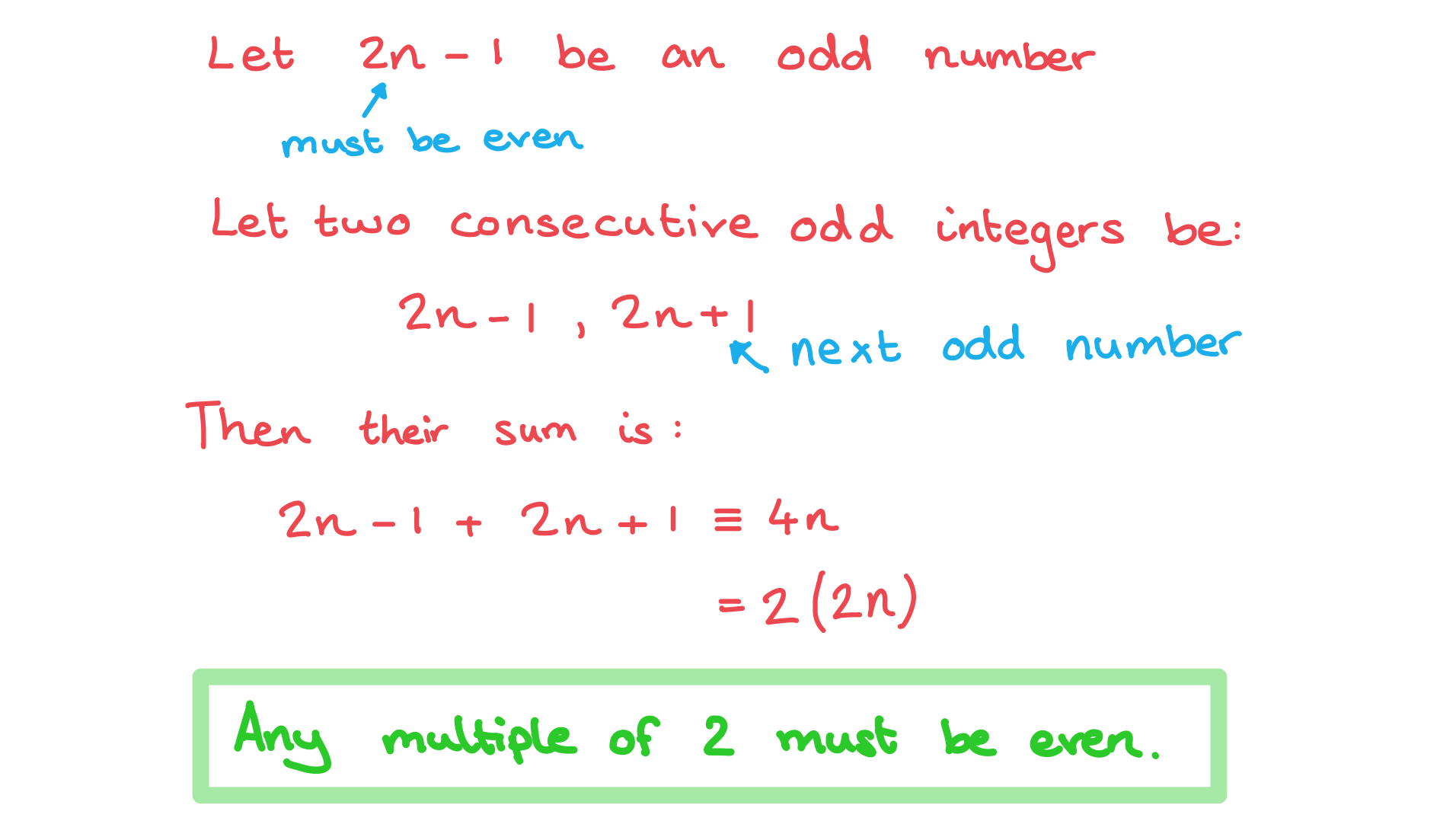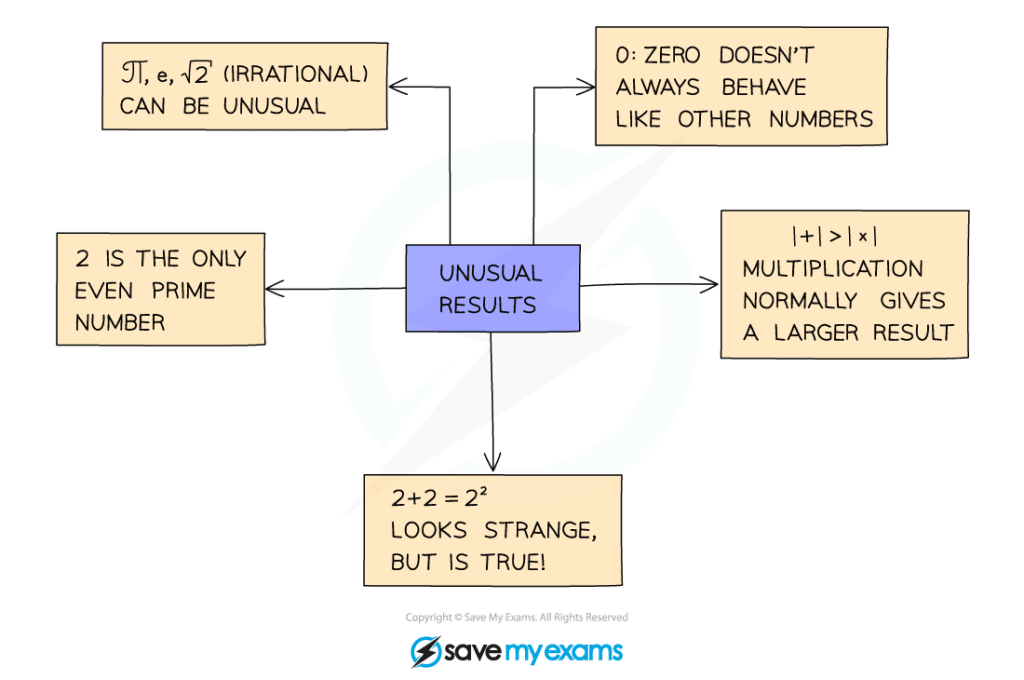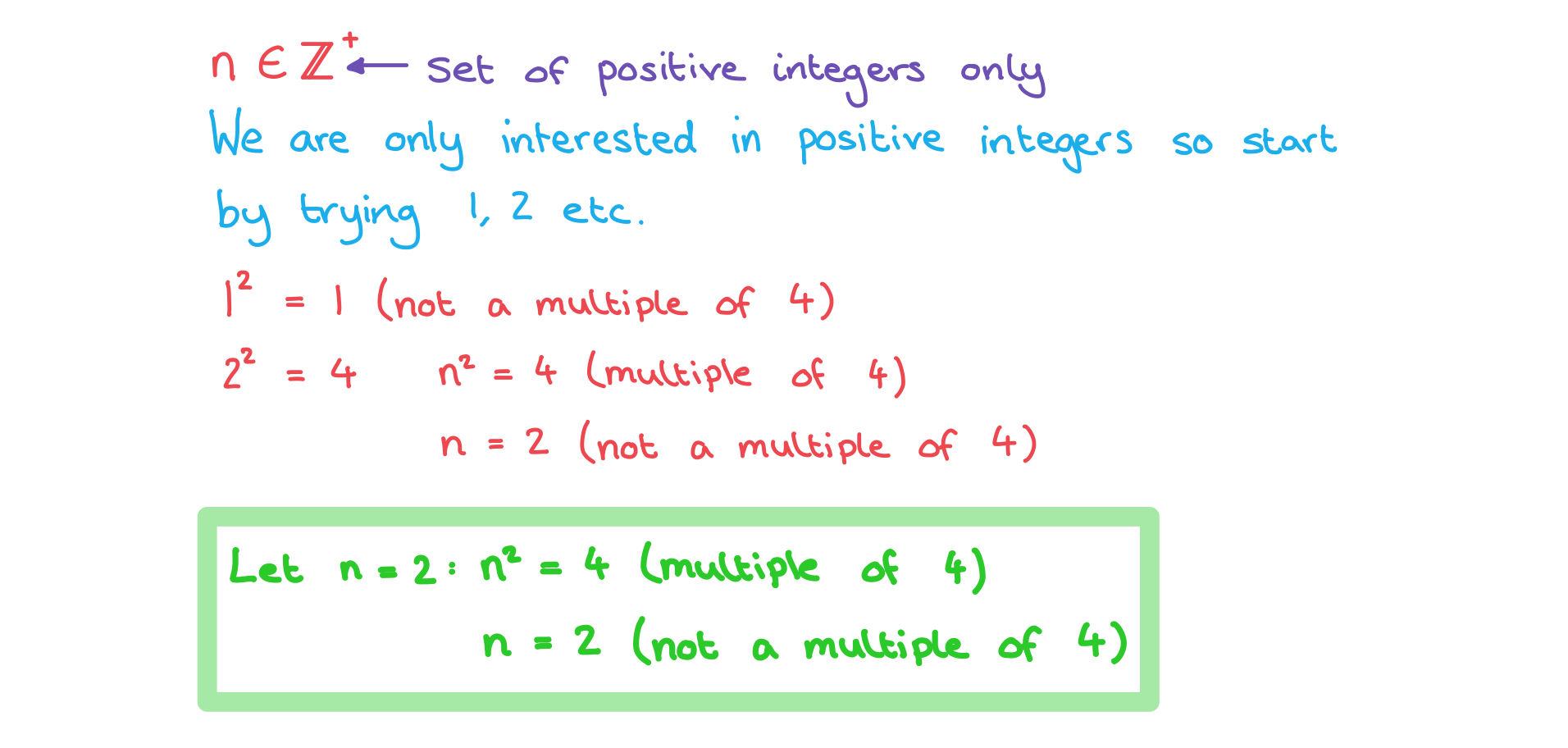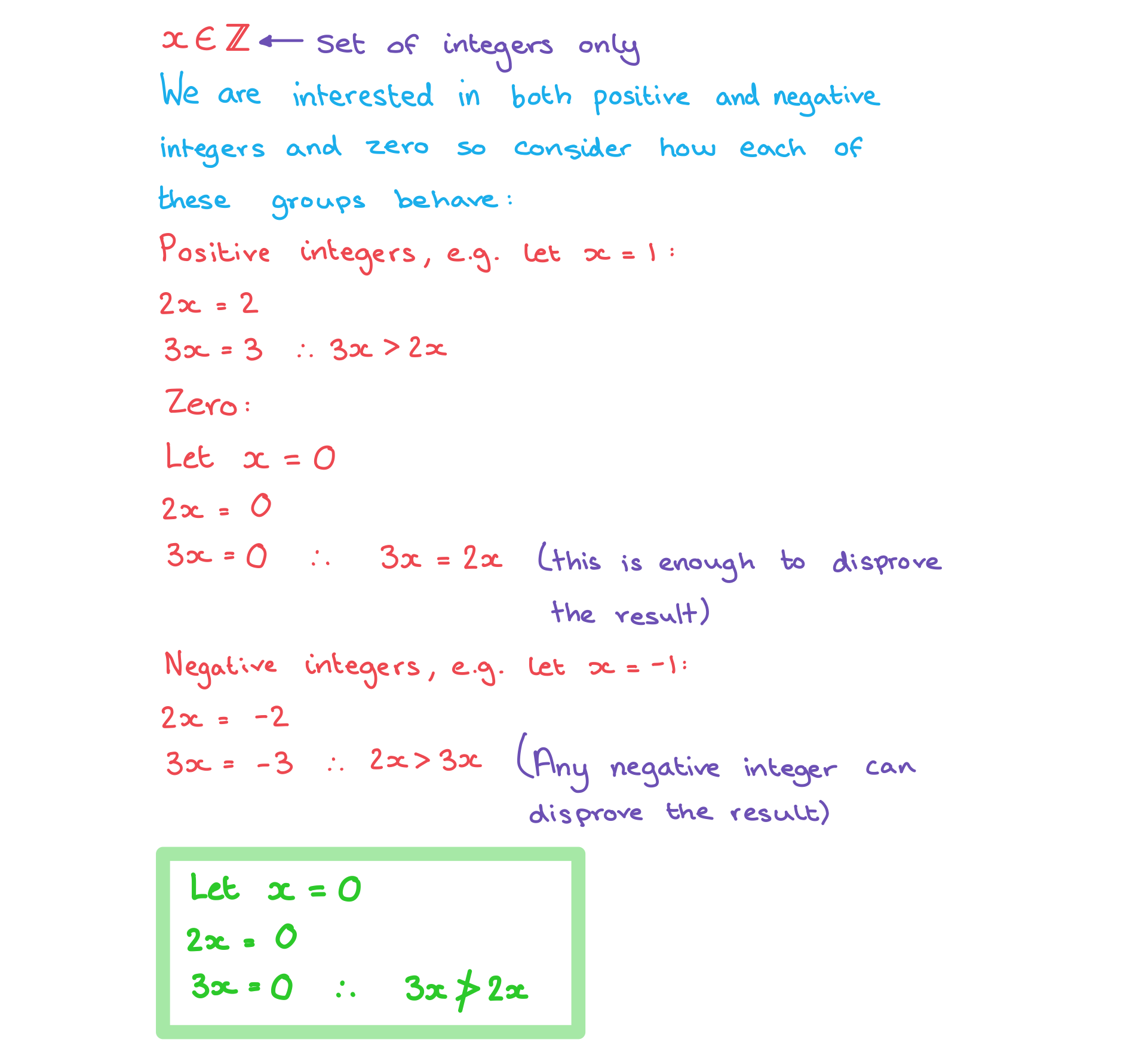Language of Proof
What is proof?
- Proof is a series of logical steps which show a result is true for all specified numbers
- ‘Seeing’ that a result works for a few numbers is not enough to show that it will work for all numbers
- Proof allows us to show (usually algebraically) that the result will work for all values
- You must be familiar with the notation and language of proof
- LHS and RHS are standard abbreviations for left-hand side and right-hand side
- Integers are used frequently in the language of proof
- The set of integers is denoted by
- The set of positive integers is denoted by
- The set of integers is denoted by
How do we prove a statement is true for all values?
- Most of the time you will need to use algebra to show that the left-hand side (LHS) is the same as the right-hand side (RHS)
- You must not move terms from one side to the other
- Start with one side (usually the LHS) and manipulate it to show that it is the same as the other
- A mathematical identity is a statement that is true for all values of x (or θ in trigonometry)
- The symbol
is used to identify an identity
- If you see this symbol then you can use proof methods to show it is true
- The symbol
- You can complete your proof by stating that RHS = LHS or writing QED
Exam Tip
- You will need to show each step of your proof clearly and set out your method in a logical manner in the exam
- Be careful not to skip steps
Worked Example
Prove that .

Proof by Deduction
What is proof by deduction?
- A mathematical and logical argument that shows that a result is true
How do we do proof by deduction?
- A proof by deduction question will often involve showing that a result is true for all integers, consecutive integers or even or odd numbers
- You can begin by letting an integer be n
- Use conventions for even (2n ) and odd (2n – 1) numbers
- You can begin by letting an integer be n
- You will need to be familiar with sets of numbers
– the set of natural numbers
– the set of integers
– the set of quotients (rational numbers)
– the set of real numbers

What is proof by exhaustion?
- Proof by exhaustion is a way to show that the desired result works for every allowed value
- This is a good method when there are only a limited number of cases to check
- Using proof by exhaustion means testing every allowed value not just showing a few examples
- The allowed values could be specific values
- They could also be split into cases such as even and odd
Exam Tip
- Try the result you are proving with a few different values
- Use a sequence of them (eg 1, 2, 3)
- Try different types of numbers (positive, negative, zero)
- This may help you see a pattern and spot what is going on
Worked Example
Prove that the sum of any two consecutive odd numbers is always even.

Disproof by Counter Example
What is disproof by counter-example?
- Disproving a result involves finding a value that does not work in the result
- That value is called a counter-example
How do I disprove a result?
- You only need to find one value that does not work
- Look out for the set of numbers for which the statement is made, it will often be just integers or natural numbers
- Numbers that have unusual results are often involved
- It is often a good idea to try the values 0 and 1 first as they often behave in different ways to other numbers
- The number 2 also behaves differently to other even numbers
- It is the only even prime number
- It is the only number that satisfies
- If it is the set of real numbers consider how rational and irrational numbers behave differently
- Think about how positive and negative numbers behave differently
- Particularly when working with inequalities

Exam Tip
- Read the question carefully, looking out for the set of numbers for which you need to prove the result
Worked Example
For each of the following statements, show that they are false by giving a counterexample:
a)
Given format('truetype')%3Bfont-weight%3Anormal%3Bfont-style%3Anormal%3B%7D%3C%2Fstyle%3E%3C%2Fdefs%3E%3Ctext%20font-family%3D%22Times%20New%20Roman%22%20font-size%3D%2218%22%20font-style%3D%22italic%22%20text-anchor%3D%22middle%22%20x%3D%224.5%22%20y%3D%2217%22%3En%3C%2Ftext%3E%3Ctext%20font-family%3D%22math1c9db4a43c908d10a0af0146bf5%22%20font-size%3D%2216%22%20text-anchor%3D%22middle%22%20x%3D%2218.5%22%20y%3D%2217%22%3E%26%23x2208%3B%3C%2Ftext%3E%3Ctext%20font-family%3D%22math1c9db4a43c908d10a0af0146bf5%22%20font-size%3D%2216%22%20text-anchor%3D%22middle%22%20x%3D%2231.5%22%20y%3D%2217%22%3E%26%23x2124%3B%3C%2Ftext%3E%3Ctext%20font-family%3D%22math1c9db4a43c908d10a0af0146bf5%22%20font-size%3D%2212%22%20text-anchor%3D%22middle%22%20x%3D%2242.5%22%20y%3D%2212%22%3E%2B%3C%2Ftext%3E%3C%2Fsvg%3E) , if
, if  is a multiple of 4, then
is a multiple of 4, then  is also a multiple of 4.
is also a multiple of 4.

b)
Given format('truetype')%3Bfont-weight%3Anormal%3Bfont-style%3Anormal%3B%7D%3C%2Fstyle%3E%3C%2Fdefs%3E%3Ctext%20font-family%3D%22Times%20New%20Roman%22%20font-size%3D%2218%22%20font-style%3D%22italic%22%20text-anchor%3D%22middle%22%20x%3D%224.5%22%20y%3D%2216%22%3Ex%3C%2Ftext%3E%3Ctext%20font-family%3D%22math141e99656f03e8ef0e86976fdda%22%20font-size%3D%2216%22%20text-anchor%3D%22middle%22%20x%3D%2218.5%22%20y%3D%2216%22%3E%26%23x2208%3B%3C%2Ftext%3E%3Ctext%20font-family%3D%22math141e99656f03e8ef0e86976fdda%22%20font-size%3D%2216%22%20text-anchor%3D%22middle%22%20x%3D%2231.5%22%20y%3D%2216%22%3E%26%23x2124%3B%3C%2Ftext%3E%3C%2Fsvg%3E) then
then  is always greater than
is always greater than  .
.

